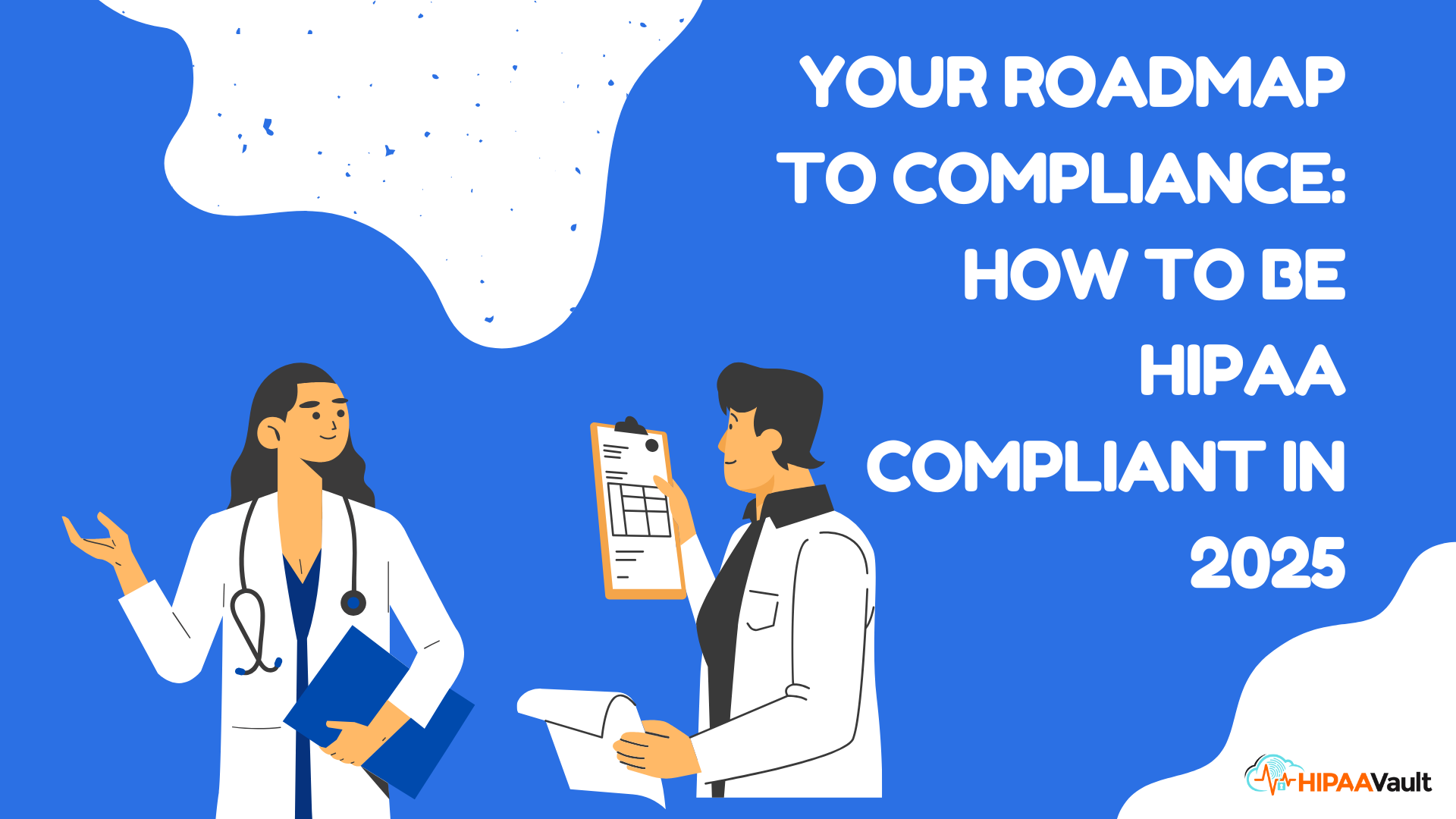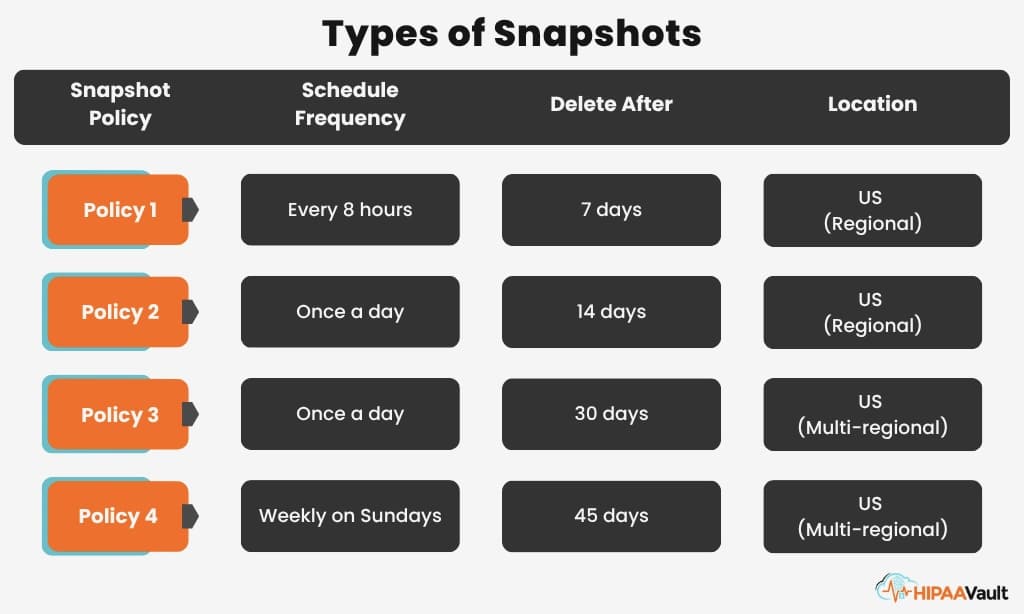HIPAA—the Health Insurance Portability and Accountability Act—remains the cornerstone of healthcare data security in the United States. In 2025, amid accelerating digital transformation, AI integration, and cloud adoption, ensuring HIPAA compliance has never been more critical.
But many organizations still ask: how do you actually become HIPAA compliant?
This guide will help healthcare providers, business associates, and healthtech developers understand the path to compliance—covering everything from technical safeguards to ongoing monitoring. We’ll also explore how HIPAA Vault helps you stay ahead of risks with managed, compliant infrastructure.
How to Be HIPAA Compliant
HIPAA compliance means aligning with the Privacy Rule, Security Rule, and Breach Notification Rule. These federal regulations require covered entities and business associates to protect patient health data—whether stored, shared, or processed.
The Privacy Rule (45 CFR Part 164 Subpart E) defines how protected health information (PHI) can be used and disclosed.
The Security Rule (45 CFR §§ 164.302–318) governs how electronic PHI (ePHI) must be secured through access controls, encryption, logging, and more.
The Breach Notification Rule (45 CFR §§ 164.400–414) requires that you report certain data breaches to patients, the Department of Health and Human Services (HHS), and potentially the media.
Failing to comply can result in reputational damage and fines that reached over $4.6 million in enforcement actions during 2024 alone—and scrutiny is expected to increase further in 2025.
Step One: Conduct a Risk Analysis
HHS requires all covered entities and business associates to perform a documented risk assessment. This foundational step helps identify where PHI is exposed—whether in email systems, databases, mobile apps, or third-party integrations.
Without a risk analysis, you can’t determine your vulnerabilities or how to mitigate them. It’s also one of the top audit failures cited by OCR.
Step Two: Implement Administrative, Physical, and Technical Safeguards
HIPAA’s safeguards fall into three categories.
Administrative safeguards include workforce training, access authorization policies, and contingency planning. Every team member interacting with PHI must be properly trained and evaluated.
Physical safeguards involve facility access controls, workstation security, and device use policies. You must prevent unauthorized individuals from accessing physical systems that store PHI.
Technical safeguards are where HIPAA Vault provides direct value. This includes:
- Encrypted data transfer (TLS 1.2+)
- AES-256 or FIPS 140-2 encryption at rest
- Multi-factor authentication (MFA)
- Centralized audit logging
- Role-based access control
HIPAA Vault’s infrastructure comes pre-hardened for compliance—removing complexity and reducing the risk of error. Explore compliant cloud services for 2025 here → https://www.hipaavault.com/
Step Three: Secure Business Associate Agreements (BAAs)
HIPAA requires a signed BAA with any vendor that handles PHI on your behalf. This legal agreement outlines their obligation to follow HIPAA’s rules and implement proper safeguards.
Whether you’re using cloud storage, CRM systems, telehealth platforms, or marketing services, a BAA is mandatory.
HIPAA Vault includes signed BAAs with all services—including secure email, WordPress hosting, and SFTP file transfer—making compliance easy and enforceable.
Step Four: Encrypt and Isolate PHI
Encryption is considered “addressable,” but in 2025 it’s no longer optional. Data that’s not encrypted is considered “unsecured” and will likely trigger breach notification requirements if compromised.
TLS 1.2+ must be enforced for all PHI in transit—whether through APIs, web forms, or email. For data at rest, use AES-256 encryption and separate encryption keys from stored data.
HIPAA Vault encrypts your data by default, both at rest and in motion. You also get secure SSH file transfer options, isolated servers, and hardened databases ready for HIPAA workflows.
Step Five: Monitor, Train, and Reassess Regularly
HIPAA is not one-and-done. It’s a living framework that evolves with new threats, technologies, and regulations.
Your team should be trained annually. Your risk assessments should be updated after major system changes. You should monitor for security incidents 24/7—and be prepared to follow a tested breach response plan if needed.
HIPAA Vault provides managed security monitoring, intrusion detection, and compliance logging to help keep your environment secure in 2025. Let us handle the infrastructure while you focus on care.
Avoid These Common 2025 Mistakes
In 2025, many organizations are still using services like Gmail, Google Drive, or AWS buckets without enabling HIPAA features or signing BAAs. Others store PHI on systems without access controls, rely on shared logins, or forget to rotate credentials.
These oversights can lead to breaches—and fines that go as high as $50,000 per violation, capped annually at $1.5 million per entity.
HIPAA Vault eliminates these risks by bundling all required protections into one managed package, with expert support.
Start with HIPAA Vault and avoid costly missteps
Final Thoughts: Compliance as a Strategic Advantage
Achieving HIPAA compliance isn’t just a legal requirement—it’s a strategic move. Patients and partners want to work with organizations they can trust.
With HIPAA Vault, you don’t just check the box—you gain a partner to guide you through audits, infrastructure changes, and emerging threats in 2025.
Start your journey to HIPAA compliance now with hardened hosting, secure email, WordPress, and file sharing—all built for healthcare.
→ Get Your HIPAA-Compliant Environment Today: https://www.hipaavault.com/








